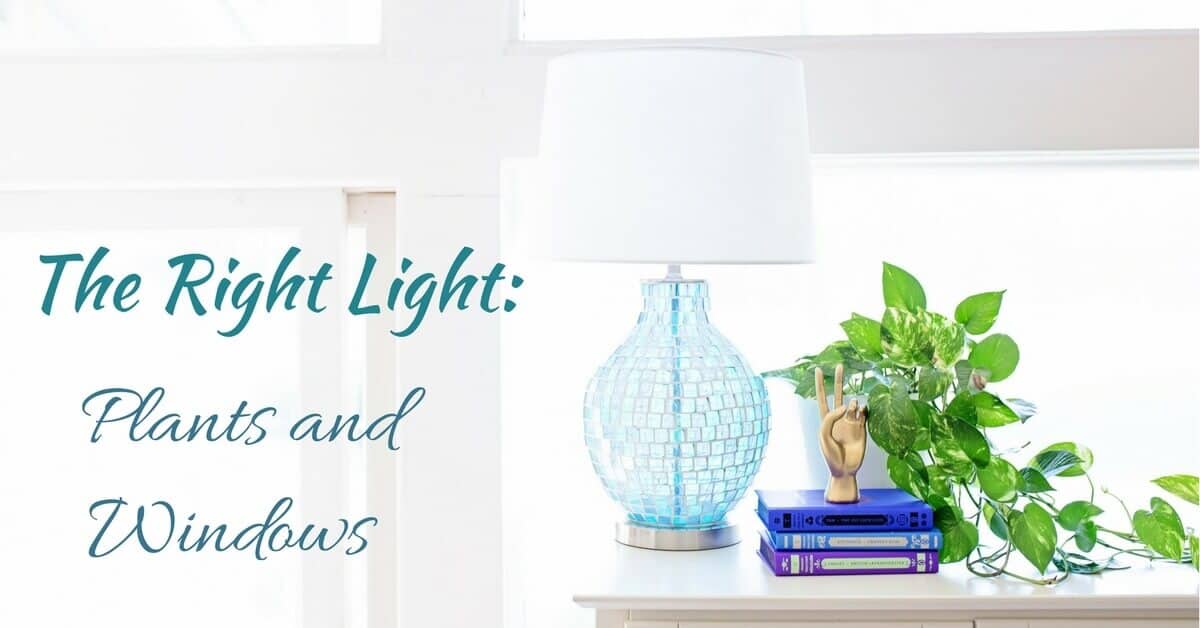- Finding the Right Indoor Plants for Desert Your Home - April 28, 2023
- Common Misunderstanding About Sun Exposure - April 18, 2023
- All about the Arizona Monsoon Season - May 21, 2021
Plants bring a breath of fresh air into your house – literally! Plants absorb our carbon dioxide and produce oxygen in return. Plants cheer up a place by adding texture and color. When bringing plants into your house, your best chance at success in keeping them alive and thriving depends on two major things: water and light.
Here, we take a quick dive into plant care and how to identify the best plant for your windows.
A Quick Overview of Plants
Plants are pretty simple creatures: they require water and light to survive. Right? Well, it may be a little more complicated than that. Temperature matters, and so does moisture. Here in the Arizona desert, we have a unique and beautiful flora, but once we bring plants indoors, there is a new set of rules. Also, this opens up room for different types of plants that you may not normally see in the desert.
Most plants basically like the same conditions we do as humans. Plants thrive around 70 degrees Fahrenheit (21 degrees Celsius) in daytime and 50 to 55 degrees Fahrenheit (10 to 13 degrees Celsius) in nighttime. Normal humidity levels in the home are fine for most plants. Try to avoid placing them in drafty spots or cold areas of the room.
When watering your plants, make sure that excess water drains through them before placing them back in their locations. You don’t want plants to sit in water. In fact, many plants should dry out a little bit before you water them again. Fertilizing isn’t always necessary, but you could use a quarter dose of fertilizer weekly while the plant is still growing, and cut back during the rest of the year.
Find the Right Light for Your Plants with Your Window’s Direction
East-Facing Windows
East-facing windows experience the sunrise, but early in the day, the light is not very strong yet, which means you don’t have to worry about intense light (that could burn your plants). East-facing windows tend to get a nice amount of light all day, but if you find that your plants are wilting or their leaves are scorched, there may be too much light. In this case, you could install a sheer curtain to diffuse the light – or invest in window screens from CC Sunscreens!
Plants that do well in east-facing windows include: philodendrons (heartleaf, split leaf, pothos, dumb cane, spider plants); umbrella trees; miniature grape ivy; Japanese fatsia; ferns (Boston fern, maidenhair fern, staghorn fern, and asparagus fern); moth orchids; African violet; cyclamen; zebra plants; fig trees (fiddleleaf fig, weeping fig); Norfolk island pine; palms (butterfly palm, Chinese palm, lady palm, parlor palm, pygmy date palm); or even a coffee tree (coffee arabica).
South-Facing Windows
South-facing windows give your plants the most light out of all four directions. While most houseplants don’t require direct sunlight to thrive, there are a number of plants that love full sun and would do well in a south-facing window. These include: jade plants and other succulents such as aloe vera, hens-and-chicks, and paddle plants; herbs such as sweet basil, chives, marjoram, mint, oregano, rosemary, sage, and thyme; dwarf citrus; geraniums; and crotons.
West-Facing Windows
West-facing windows produce a weaker light than their eastern counterpart, but often inherit light from a south-facing window, if there is one. Flowering houseplants tend to do well in west-facing windows, but you could also try using east-facing or south-facing plants in this location as well. West-facing windows take in the bulk of the afternoon sun, which is the hottest of the day. Look out for any burns or scorches on your plants in this location. If the light is too intense, you might want to move your plants further away from the window or change locations.
Plants that thrive in west-facing windows include: coleus; bloodleaf; croton; false aralia; pleomele; Veitch’s screwpine; tiplant; geraniums; azalea; cape jasmine; hibiscus; impatiens; Persian violets; and shamrock.
North-Facing Windows
North-facing windows don’t get much sunlight, but they do provide enough for some plants to get by. Plants that love north-facing windows don’t need too much light. If you see yellowing leaves on your north-facing plants, this may indicate they are receiving too much light. Move them to a different location or further back from the window. Daytime light is enough for these low-maintenance plants.
Plants that do well in north-facing windows include pothos (devil’s ivy); peace lily; mother-in-law’s tongue (snake plant); cast iron plant (which prefers to be left alone!); Philippine evergreen; peacock or zebra plant; and the ZZ (“zee zee”) plant.
Window Screens from CC Sunscreens
While your plants are soaking up the rays, we at CC Sunscreens care about protecting you, your family, your belongings, and your wallet from the sun’s harmful UV rays. Reach out to our friendly team today to learn how protective window solar screens or patio shades can help you rest a little easier in the sunshine state. Our sunscreens are plant-friendly, and you’ll be able to truly relax, knowing your family and belongings are safe and protected – regardless of the weather or season.

